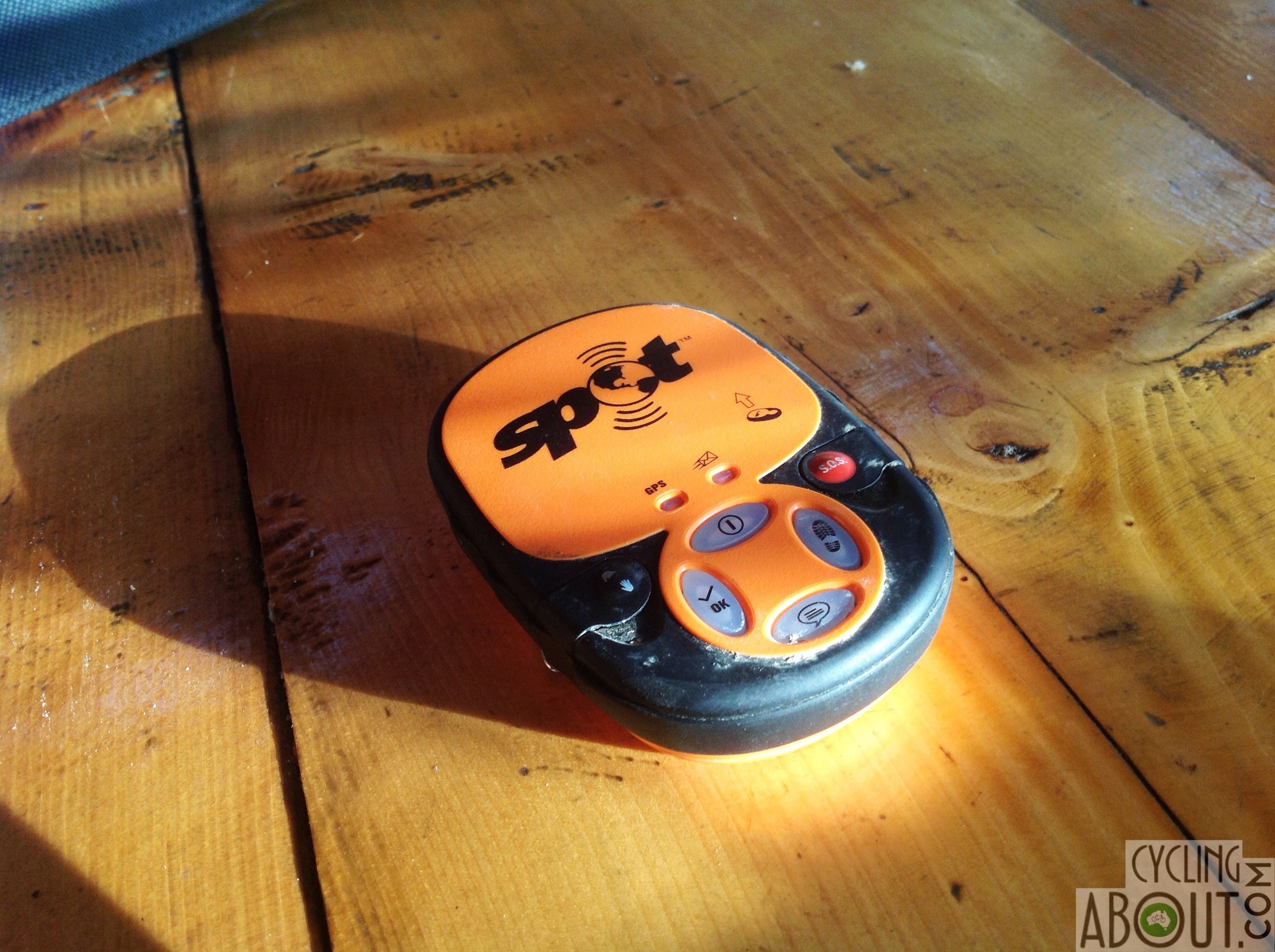Table of Contents
Welcome to our short review of the Spot GPS tracker!
We ended up using a Spot for one of two years on the road. We used it to ‘check in’, sending information to a satellite, then back to Earth, and in the process notifying everyone on the internet of our safety and location. We found this particularly useful in areas where we didn’t have regular access to the internet, or more specifically a few sections between Turkey and China.
During the periods when we did have an internet connection (using mobile internet data, couchsurfing or in hostels) we stopped using the Tracker altogether. We don’t really see the Spot Tracker as a necessary device if you have regular access to cellular data on your mobile phone.
During our more remote stretches, in Uzbekistan or Kyrgyzstan for example, our family and friends loved following our progress in real time. We were able to set up our Spot account to email a few people directly with updates, but most bicycle tourers actually link their Spot account to Twitter or Facebook which posts automatically with a personalized message. Here’s an example by Braking Boundaries:
The Spot is perfect for solo touring and adventuring where you might become incapacitated and in urgent need of contact. You can use the ‘help’ button to alert your personal contacts that you need help in non-life-threatening situations.
Alternatively, there’s an ’emergency’ button which has the ability to contact emergency services with your precise location, in any country in the world! We thankfully never needed to use it, but it’s great knowing that we can. There’s actually no charge for using this button as it is picked up in your somewhat expensive yearly subscription ($130 AUD).
Another great feature is that you can track your progress in real time, although this adds $50 USD to your yearly subscription fees. We found that for a bicycle touring application, tracking isn’t a necessary upgrade. Tracking is more suited to endurance racing where competitors can be tracked in relation to each other – during the Tour Divide for example. The latest Spot Gen 3 allows you to change your tracks to send every 5, 10, 30, or 60 minutes which allows you to maximize your battery life.
Unfortunately our Spot 2 stopped working in SE Asia. It flashed away whenever we checked in, indicating that a track had been sent to the satellite, but those checkins never got processed. We contacted Spot at the time, and they thought it was their faulty antenna in Singapore. However the antenna was soon fixed and we still weren’t getting checked in. We are currently organising a replacement tracker.
The Why
– Let people know that you’re ok without an internet/phone connection.
– People can follow your progress on a map through ‘tracking’.
– Send custom messages to your loved ones from anywhere in the world.
– Emergency button which can provide rescue assistance (police, ambulance, helicopter etc) anywhere in the world.
– Help button for just your emergency contacts to sort out a suitable method of helping you without police or search and rescue.
– Super small and lightweight.
The Why Not
– It’s a costly yearly membership for people who won’t use it often.
– We’ve found the Spot to be unnecessary in regions where we have had an internet connection on our phone.
Price
US$169 + US$99 yearly subscription (basic)
Similar products
– Spot Gen3 is the latest model



